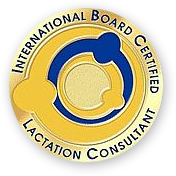"I had a c-section. Surprisingly, I felt pretty good during the first week, except for my nipples, which felt like hot coals. I thought that that was the worst thing that could happen until one morning, I woke up with incredible pain in my breasts as well."
When Cassie's baby was 8 days old, she felt like she had been run over by a bus.
Despite a long labor and an unplanned c-section birth, she had felt pretty good up until that point. The previous day she had been to the store and to the pediatrician and, because nursing was not going well, to the Lactation Consultant. Her baby's diapers were pretty dry and she had painfully sore nipples. That morning, she woke up to painful breasts as well, and over the course of a day, developed angry red streaks on her left breast and red near the nipple on her right side.
She had developed mastitis.
Mastitis is a common problem among breastfeeding mothers. The exhaustion, aching muscles and fever mimic the flu but the red streaked breasts and tender spots make mastitis unmistakeable. Although there are several contributing factors, the most common one is exhaustion. Most mothers with mastitis try to do too much. Even mothers who feel great may bring on mastitis simply by skipping a nap.
When "ho-ho-ho" leads to woe.
Mastitis is more common during the holidays when holiday pressures pile onto an already stressed situation. Too much cleaning and shopping, skipping feeds and naps and sleeping on your breast during a deep sleep can block milk ducts.
Other contributing factors include over-abundant milk supply, over-stimulated babies and babies who who don’t latch on correctly. Mastitis can come on rather unexpectedly the first time. The mother may notice breast soreness, flu-like symptoms, and the hard lump of a plugged milk duct before full blown mastitis sets in, or she may not.
Self-care is a must but it might not be enough.
Healing mastitis includes plenty of rest, canceling all activities and going to bed. The mother should continue to nurse frequently to unblock the plugged duct and drink plenty of water. Hot compresses can relieve soreness. Cold compresses and less frequent feedings after the crisis can help slow overactive milk production, if it is a contributing factor. If the mother doesn’t feel better with a day or so of sleep and nursing, she should go to her healthcare provider who will probably prescribe antibiotics and rest. The mother should continue frequent nursing or pumpiong of the affected breast.
In Cassie's case, she was already on post-surgical antibiotics and listened to her body, which was exhausted. The mastitis cleared up pretty quickly and she continued working to get her son to latch-on better over the next week or so. She went on to nurse pain-free for the next year. She had a few plugged ducts after that but none ever developed into mastitis. In hindsight, she should have stayed home and requested a visit at home from a lactation consultant or visiting nurse as soon as she came home from the hospital. She would have had better latching, less pain and more energy.
Help! It keeps coming back!
In cases of recurring mastitis, mothers should investigate poor latch or sucking problems. She may also want to study how her bra fits and alternate nursing positions. Most importantly, she should increase her rest and reduce stessful activities and situations.



